Archetypal Psychology and Couples Therapy: Applying Robert Moore’s Ideas to Relationship Counseling

Archetypal Psychology and Couples Therapy: Applying Robert Moore’s Ideas to Relationship Counseling
Robert Moore, Ph.D. was a pioneering psychoanalyst, theologian, and scholar who left an indelible impact on the fields of analytical psychology and psychotherapy before his untimely passing in 2016. As a leading thinker in Jungian psychology, spirituality, and archetypal studies, Dr. Moore’s prolific career shed light on the deep archetypal structures and dynamics of the human psyche. His innovative theories integrated the work of Carl Jung, world mythologies, ritual practices, and psychoanalytic thought to illuminate the depths of the unconscious mind.
Early Life and Education
Robert L. Moore was born in Chicago in 1942. He earned his Ph.D. in psychology, religion and culture from the University of Chicago in 1970. Prior to this, he received a B.A. from Hendrix College, a B.D. from the University of Chicago Divinity School, and an M.A. in psychology from the University of Chicago. This multidisciplinary education laid the foundation for his future work bridging psychology, spirituality, and cultural studies.
Teaching Career and Scholarly Pursuits
Dr. Moore served as Professor of Psychology, Psychoanalysis and Spirituality at the Chicago Theological Seminary from 1968 until his retirement. There, he was the founding director of the new Institute for Advanced Studies in Spirituality and Wellness. He also taught as an adjunct professor at the Jungian-based C.G. Jung Institute in Chicago, where he was a training analyst.
As a scholar, his research spanned Jungian and archetypal psychology, the psychology of religion, initiation rites and rituals across cultures, and the psychodynamics of violence and destructiveness. He authored and edited numerous influential books, including The Archetype of Initiation: Sacred Space, Ritual Process and Personal Transformation; The Magician and the Analyst: The Archetype of the Magus in Occult Spirituality and Jungian Psychology; Facing the Dragon: Confronting Personal and Spiritual Grandiosity; and The Archetype of Initiation.
The Archetypal Self and the Collective Unconscious
Central to Moore’s work was the Jungian concept of the archetypal Self – the regulating center of the psyche and the source of inner wisdom and spiritual transcendence. Drawing upon Jung, Moore saw the Self as the totality of the psyche, both conscious and unconscious, which guides the process of individuation.
The Self, for Moore, is expressed through numinous archetypal images like the divine couple – the King and Queen, or God and Goddess. These archetypal figures, he argued, manifest in dreams, myths, fairy tales and the world’s religions as recurring motifs. Moore expanded upon classical Jungian theory to propose four fundamental manifestations of the Self’s archetypal imagery:
- The Sovereign (King/Queen)
- The Warrior
- The Magician
- The Lover
Each of these archetypal energies, Moore taught, shape different arenas of human life and give rise to specific psycho-spiritual tasks and challenges. Engaging consciously with these deep structures enables healing, maturation and the discovery of one’s deepest Self.
Initiation, Ritual and Sacred Space
Drawing upon anthropology and world mythology, Moore studied initiation rituals and rites of passage across cultures. He saw these sacred rituals as enactments of archetypal dramas designed to shepherd individuals through key psycho-spiritual thresholds in life.
For boys and men, he outlined how cultures have utilized initiation to model the four archetypes of mature masculinity that he called:
- The King (providing just order and blessing)
- The Warrior (defending boundaries and fighting chaos)
- The Magician (awareness and transformation)
- The Lover (sensitivity and passion)
Moore argued that the lack of such initiatory experiences in the modern world has led to the perpetuation of immature “Boy Psychology” in adult men. He called for the creative re-visioning of male initiation and mentoring to facilitate healing and mature masculine development.
He also wrote about the importance of sacred space and ritual enactments for the human psyche. Sacred rituals and spaces, he taught, connect us experientially to the archetypal realm and the numinal reality of the Self. They serve as “portals” to the imaginal world, allowing the conscious personality to access transpersonal energies and open to inner transformation.
The Archetypal Roots of Human Destructiveness
Later in his career, Moore probed the depths of human evil and psychopathology. He mapped how destructive behaviors and violence arise from a primitive, archaic layer of the psyche he called the “archetypal shadow.” This shadow realm, he argued, contains dissociated traumatic experiences as well as archetypal energies that can possess the ego when unintegrated.
At the core of human evil and violence, Moore located the psychological dynamic of “pathological infantile grandiosity.” This unconscious inflation of the ego leads to toxic narcissism, psychological splitting and the acting out of dissociated shadow energies. Such grandiosity cuts the ego off from both inner and outer sources of wisdom, empathy and orientation. The result is the unleashing of unchecked aggression, sadism, greed, will to power and what Moore called “the archetype of the negative Father” or the patriarchal dominator.
Faced with this dark potential within the human psyche, Moore called for the cultivation of mature spiritual and ethical awareness to contain the archetypal shadow. By connecting to the healthy energies of the Self and the wisdom of the archetypes, Moore believed we could resist falling into evil’s thrall. Psychotherapy, he taught, has a key role to play by making the shadow conscious and facilitating the ego’s relationship to the Self.
The realm of intimate relationships is a crucible where the deep patterns and structures of the psyche are inevitably enacted, shaping the joys and struggles of our most cherished bonds. As couples navigate the challenging terrain of love, they often find themselves in need of guidance – a map to illuminate the hidden dynamics of their connection and tools to build a more conscious, generative partnership. The groundbreaking work of archetypal psychologist Robert Moore offers just such a map and tools. By revealing the universal patterns that underlie human development and relationships, Moore’s theories provide a transformative framework for couples therapy – one that goes beyond problem-solving to facilitate the sacred, individuating potential of intimate partnership.
Moore’s key ideas – the inner marriage of masculine and feminine, the four archetypes of mature masculinity and femininity, the role of the Self, and the need for relational initiation – can inform a depth approach to couples work. We will see how integrating these concepts enables therapists to guide couples in aligning their relationship with the deeper currents of the psyche – resolving conflicts, forging more skillful communication, and connecting to the mythic dimensions of their love. To illustrate these ideas, we will weave in the stories of iconic historical couples, revealing the archetypal motifs that shaped their legendary bonds. Our goal is to present a vision of relationship counseling that taps the profound resources of Moore’s archetypal psychology – illuminating how this lens can transform couples work into a sacred journey of individuation and soulful communion.
The Inner Marriage and Romantic Relationships
At the heart of Moore’s conception of psychological and spiritual development is the idea of the inner marriage – the lifelong process of forging a dynamic, creative union between the masculine and feminine energies within the psyche. Individuation, the journey of becoming wholly ourselves, requires recognizing and integrating these often polarized forces, birthing the inner King and Queen, Warrior and Lover, Magician and Wise Woman. As we embrace and unite the deep masculine and feminine within us, we gradually embody our fullest humanity – able to wield power and surrender to love, to penetrate life’s mysteries and gestate new realities.
This concept of the inner marriage offers a revolutionary starting point for relationship counseling. Rather than focusing solely on interpersonal dynamics, a Jungian approach guided by Moore’s ideas recognizes that our outer relationships mirror and activate the inner relationship between masculine and feminine. Our attractions, conflicts, and sexual dance with another are all guided by the psyche’s innate drive to incarnate its wholeness through the union of opposites.
In this light, the therapist’s task expands to facilitating the individuation of each partner within the crucible of the relationship. Conflicts are seen as the psyche’s way of pointing to the underdeveloped inner masculine or feminine – the immature King or Queen battling for dominance, the Warrior and Lover competing for ascendance. By helping each partner identify and integrate these inner figures, the therapist midwifes the development of a more differentiated, resourced selfhood within the couple. As each individual grows toward wholeness, they bring more authentic presence, skill, and love to the relationship.
To facilitate this inner marriage within the relationship, the therapist can guide couples in an ongoing dialogue process, in which each partner is invited to speak from their inner King, Queen, Warrior, Lover, Magician, Mother, and Wise Woman. This enables the couple to step outside their habitual roles and access the deep well of archetypal wisdom within them. The inner King and Queen can dialogue about their respective visions and concerns for the relationship; the Warrior and Lover can express their differing needs and longings; the Magician and Wise Woman can explore creative solutions to recurring problems.
As couples learn to embrace and express these diverse energies, they develop a more multi-faceted bond – able to summon the optimum archetypal resource for each situation. Conflict arises and the Warrior steps forward to protect the relationship with fierce clarity; a decision looms and the King and Queen meet to align on the wisest path forward; desire beckons and the Lover seduces her partner into sensual communion; a vexing problem emerges and the Magician and Wise Woman put their heads together to divine a creative solution. The relationship becomes an alchemical vessel in which the full spectrum of masculine and feminine energies can arise, differentiate, and dance together.
The Archetypes of Mature Masculinity and Femininity
Integral to facilitating the inner marriage is helping each partner develop access to the four foundational archetypes of mature masculinity (King, Warrior, Magician, Lover) and femininity (Queen, Mother, Wise Woman, Lover). Moore mapped how these universal energies, when engaged consciously, empower us to embody our deepest capacities and meet life’s challenges skillfully.
The King and Queen archetypes enable us to hold center, wield power with integrity, and bless the world with our gifts. The Warrior and Mother grant us the strength to protect what we cherish, set necessary boundaries, and persist through adversity. The Magician and Wise Woman attune us to the unseen realms, guiding us to transform crises into opportunities and penetrate life’s core mysteries. The Lover fills us with passion, empathy, and the urge to merge ecstatically with the Beloved.
In relationship counseling, the therapist can assess how these potentials are playing out for each partner – noticing where the archetypes are immature, wounded, or inaccessible. She guides the couple in confronting the destructive expressions of the archetypes (the Tyrant, the Sadist, the Manipulator, the Impulsive Addict) and cultivating access to their mature forms. Gradually, each partner becomes able to stand in the dignity of their Sovereign, the discernment of their Wise Woman, the courage of their Warrior, the care of their Mother, the insight of their Magician, and the passion of their Lover.
As the couple integrates these capacities, they show up in more skilful, resourced ways – emanating the King’s stability during crises, the Mother’s attunement during conflicts, the Magician’s visionary creativity during impasses. Moore’s archetypal framework enables the therapist to track how the couple is growing toward wholeness and to celebrate each new capacity that emerges. Ultimately, the relationship becomes a sacred space in which each partner’s deep masculine and feminine are honored, provoked, and called into embodiment through the daily rigors of loving.
Connecting to the Transpersonal Self
At the core of Moore’s archetypal schema is the Self – the transpersonal center of the psyche that orchestrates the individuation journey and provides an inexhaustible source of guidance, healing, and creative transformation. In contrast to the ego, which is the seat of our conscious identity and will, the Self is the supra-ordinate mystery that dream, synchronicity, and symbol point us back to, the “God image” within that radiates our unique essence and purpose.
Moore placed connecting to and serving the Self at the heart of the individuation process. As we attune to its guidance through practices like dream work, active imagination, and sacred ritual, we open to a wisdom beyond the ego, a power that can guide us through the most bewildering challenges. In times of crisis, we learn to drop into the ground of the Self, accessing its capacity to transmute wounds, illuminate meaning, and reveal the deeper pattern of our lives. Gradually, we build a living relationship with this core of the psyche, coming to trust its redemptive, guiding intelligence.
In couples therapy, the Self emerges as a crucial resource and guiding light for the relationship. The therapist encourages each partner to experience and deepen their connection to this inner wellspring, whether through dreams, synchronicities, creative expression, nature immersion, or meditative practice. She helps the couple attune to the Self’s wisdom as they navigate relational crises – inquiring into what vision or purpose is calling them through this ordeal, what new capacities are being forged, what treasures are buried in the rubble.
Over time, the relationship itself becomes rooted in a shared devotion to the Self – a commitment to listening for and serving its guidance. The couple develops a felt sense of the sacred, transpersonal dimension of their bond – the “third body” that emerges between and includes them, guiding them in a mysterious, intelligent dance of individuation. In decision making and conflict resolution, they drop underneath personal agendas to ask: what would the Self have us do? What qualities is it calling us to embody now? What is the deeper purpose moving through our relationship? As they align with the Self’s vision, again and again they find unexpected solutions arising, uncanny pathways opening, and strength to meet the moment pouring through them.
By consciously invoking the Self as a partner in the relationship, the couple contact a source of meaning and power beyond the vicissitudes of personal ego and emotional reactivity. They root their love in the bedrock of being, the great mystery that moves them, the core around which their personalities orbit like planets ’round the sun. And it is in this light that even their darkest passages reveal their sacred purpose, their most devastating crucibles divulge a divine alchemy at work. For seen through the eyes of the Self, their relationship becomes an initiation into wholeness, an endless opportunity to surrender to a Love beyond their making.
The Relationship as Rite of Passage
This notion that intimate relationship is, at its depth, a rite of initiation is central to Moore’s vision – and to the transformative potential of a Jungian approach to couples therapy. Drawing on the archetypal pattern of initiation, which he saw encoded cross-culturally in myths and ritual practices, Moore recognized that the psyche innately seeks initiatory experiences to catalyze our development.
In traditional cultures, initiations facilitated the critical passages of identity – birth, coming of age, marriage, entry into elderhood, and death. Through carefully crafted rites, the initiate was guided to surrender their old identity, enter a liminal state of dissolution, and emerge transformed – with an expanded sense of self, community, and purpose. At the heart of each initiation was an ordeal, a supreme test that could only be survived through radical letting go and trust in a power beyond the ego. By prevailing, the initiate entered into a larger life, dying to their familiar self and being reborn in a new guise.
Moore argued that, in the modern world, the psyche’s need for such initiatory passages persists – but without culturally sanctioned rites to contain them, these transformative ordeals often erupt destructively, in events like psychotic breaks, addictive collapses, and suicidal depressions. The task of a contemporary therapy, as he envisioned it, is to provide a conscious, generative context for the individuation journey – to become a rite of initiation that midwifes the death of the old self and the birth of the new.
In relationship counseling, this understanding reframes the entire trajectory of a partnership – from initial attraction to the inevitable power struggles to the forging of a more authentic, tempered love – as a series of initiatory passages. Each phase becomes a sacred threshold, an opportunity to surrender who we have been and enter more deeply into the mystery of self and other. The initial attraction becomes an initiation into Eros, the power struggle an initiation into differentiation, the plunge into commitment an initiation into communion. And the entire relationship becomes an overarching rite of passage that the couple traverses together – dying and being reborn, again and again, each time emerging more transparent to love’s tremendous mystery.
From this vantage, the ruptures and crises of relationship reveal themselves to be initiatory ordeals that test each partner to their very limit – demanding no less than everything, promising no less than new life. The betrayal that shatters a brittle trust, the illness that exposes the fragility of life, the impasse that defies resolution – each presses the couple to the brink of soul, compelling them to give themselves with reckless abandon to a process and power they cannot control.
Here, the work of the therapist is not to spare the couple these initiatory fires but to coach them to surrender consciously to the flames – to stay present amidst unbearable intensity, open beyond all knowing, devoted beyond all doubt. She becomes the tribal elder presiding over their rite of passage, holding the awareness that what feels like annihilation is the psyche’s ruthless way of making room for new life. Through her steadfast, incisive mirroring, she reminds the couple that even their most harrowing ordeals are the Self’s way of resculpting them for love.
In this crucible, the couple’s projections and past wounds are purified in the fires of the present; the dross of generations is smelted into gold. Gradually, each partner is reborn in the presence of the other, having released everything nonessential and rediscovered the naked resiliency of their being. The bond that emerges is supple and strong, having been tested in love’s refining blaze. No longer fueled by fantasy or mere compatibility, the relationship rests on the bedrock of a hard-won communion.
To anchor this more essential bond, the therapist can guide the couple in co-creating rituals that mark these initiatory thresholds. Drawing on traditional rites of passage, they might devise a ceremony to consciously burn away the past at the end of a power struggle, a prayer to welcome in a new stage of commitment, a vow to witness each other all the way through, from this breath to the last. As the couple learns to ritualize the archetypal passages of their relationship, they begin to experience its sacred dimension – the mythic canvas they are painted upon, the ancient, holy play they are enacting.
In the end, the relationship itself becomes an initiation into a love that obliterates all separate identity – a love that strips everything false and reveals the radiant emptiness at the core of soul. Navigating the twists and turns of fate together, the couple continually rediscover the one great Love manifesting as their two, unique selves. Like the lovers in Rumi’s ecstatic verse, they live into the truth that:
There is no love greater than to lay down one’s life for one’s friend. Not for millions, not for billions, not for anything, is there a love greater than to lay down one’s life for one’s friend.
Historical Couples and Archetypal Dynamics
To flesh out these concepts and illuminate their relevance, let us now weave in the stories of two iconic, historical pairings, exploring the archetypal themes and transformative passages that forged their legendary bonds. Through the tales of Odysseus and Penelope and Frida Kahlo and Diego Rivera, we catch vivid glimpses of the inner Kings and Queens, Warriors and Lovers, Magicians and Wise Women that animate the perennial dramas of love.
Odysseus and Penelope:
An Archetypal Journey of Individuation The Homeric saga of Odysseus and Penelope is, at its mythic core, a love story – and a story of initiation. Torn apart by the Trojan War, the archetypal King and Queen endure parallel trials that test them to the very limits of identity – only to reunite twenty years later, forever changed.
Odysseus’s arduous voyage home becomes a rite of passage – a supreme initiation into mature masculinity. Battling gods and monsters, seduced by sirens and sorceresses, the virile Warrior is gradually stripped of all hubris – each deadly trial demanding more radical surrender. Cyclops devours his men; Circe lulls him into luxurious captivity; the Underworld reveals the painful truth of mortality. Through it all, Odysseus must continually release identification with the heroic persona that has defined him – dying to the untempered Warrior so the wise Sovereign may be born. Again and again he finds himself in the liminal space between life and death – clinging to a tree over Charybdis’ maelstrom, lashed to a mast as sirens sing oblivion, shipwrecked naked on Calypso’s shore. Yet each time he somehow prevails, shedding another layer of illusion. Beneath the Warrior’s brash armor, the mature King gradually emerges – tempered by suffering, wizened in spirit, anchored in a hard-won humility before fate.
Meanwhile, back in Ithaka, Penelope undergoes her own archetypal initiation. With Odysseus presumed dead and brutish suitors clamoring for her hand, the Queen’s political sovereignty and chaste devotion are tested to the breaking point. Whereas a younger woman might have collapsed beneath the pressure, Penelope meets her straits with uncanny ingenuity and resolve – stalling the suitors for years with a ruse of weaving. To hold the kingdom for her love, she must embody the canny wisdom of the Wise Woman, the fierce protectiveness of the Mother, and the unshakable fidelity of the Lover. Through her long ordeal she, too, is reshaped – her youthful identity as princess and bride burned away, replaced by a Queen in full command of her power.
When, at long last, the lovers reunite, they barely recognize each other. Odysseus, expecting to find his wife as he left her twenty years prior, is amazed to discover a formidable Queen in her place – an equal in every way, forged in the same initiatory fires that recast him. And Penelope, welcoming home this mysterious beggar, realizes he is no longer merely her heroic husband but an archetypal King – a man transfigured by tremendous trials into the Sovereign the kingdom needs. They come together not as callow youths but as twin monarchs and spiritual initiates – two fully individuated souls choosing to face life’s remaining adventures side by side. As Homer narrates, their reunion is a sacred epiphany – a lovemaking so intense and cathartic it seems to shake the very earth, the olive tree bed Odysseus.
Key Ideas:
- The concept of the inner marriage between masculine and feminine energies
- Four archetypes of mature masculinity: King, Warrior, Magician, Lover
- Four archetypes of mature femininity: Queen, Mother, Wise Woman, Lover
- The role of the transpersonal Self in guiding relationships
- Viewing relationships as rites of passage and initiatory experiences
- Using archetypal psychology to inform couples therapy
- The importance of sacred space and ritual in relationships
- Integrating shadow aspects of archetypes in personal growth
- The concept of pathological infantile grandiosity
- The role of initiation rituals in psychological development
- Applying mythological themes to understand relationship dynamics
- The importance of individuation within partnerships
- Using dialogue processes to access archetypal wisdom in therapy
- The transformative potential of relationship crises
- Aligning relationships with the guidance of the Self
Bibliography:
- Moore, R. (1991). King, Warrior, Magician, Lover: Rediscovering the Archetypes of the Mature Masculine. HarperOne.
- Moore, R., & Gillette, D. (1992). The King Within: Accessing the King in the Male Psyche. William Morrow.
- Moore, R. (2001). The Archetype of Initiation: Sacred Space, Ritual Process, and Personal Transformation. Xlibris Corporation.
- Moore, R. (2003). Facing the Dragon: Confronting Personal and Spiritual Grandiosity. Chiron Publications.
- Jung, C.G. (1968). The Archetypes and the Collective Unconscious. Princeton University Press.
- Johnson, R.A. (1989). He: Understanding Masculine Psychology. Harper & Row.
- Johnson, R.A. (1989). She: Understanding Feminine Psychology. Harper & Row.
- Woodman, M. (1985). The Pregnant Virgin: A Process of Psychological Transformation. Inner City Books.
- von Franz, M-L. (1997). Archetypal Patterns in Fairy Tales. Inner City Books.
- Whitmont, E.C. (1969). The Symbolic Quest: Basic Concepts of Analytical Psychology. Princeton University Press.
- Neumann, E. (1994). The Origins and History of Consciousness. Princeton University Press.
- Hillman, J. (1975). Re-Visioning Psychology. Harper & Row.
- Bly, R. (1990). Iron John: A Book About Men. Addison-Wesley.
- Woodman, M. (1993). Conscious Femininity: Interviews with Marion Woodman. Inner City Books.
- Perera, S.B. (1981). Descent to the Goddess: A Way of Initiation for Women. Inner City Books.
- Campbell, J. (1949). The Hero with a Thousand Faces. Pantheon Books.
- Eliade, M. (1958). Rites and Symbols of Initiation: The Mysteries of Birth and Rebirth. Harper & Row.
- Grof, S. (1988). The Adventure of Self-Discovery. SUNY Press.
- Singer, J. (1994). Boundaries of the Soul: The Practice of Jung’s Psychology. Anchor.
- Hollis, J. (1998). The Eden Project: In Search of the Magical Other. Inner City Books.
Read More Depth Psychology Articles:
Taproot Therapy Collective Podcast
Jungian Topics
How Psychotherapy Lost its Way
Therapy, Mysticism and Spirituality?
What Can the Origins of Religion Teach us about Psychology
The Major Influences from Philosophy and Religions on Carl Jung
How to Understand Carl Jung
How to Use Jungian Psychology for Screenwriting and Writing Fiction
How the Shadow Shows up in Dreams
Using Jungian Thought to Combat Addiction
Jungian Exercises from Greek Myth
Jungian Shadow Work Meditation
Free Shadow Work Group Exercise
Post Post-Moderninsm and Post Secular Sacred


















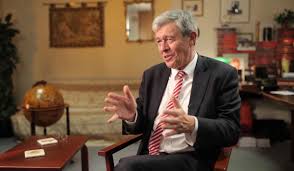

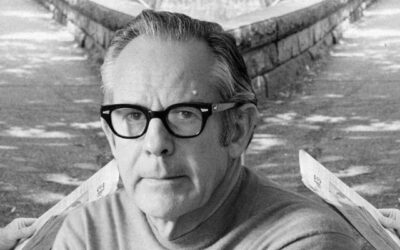
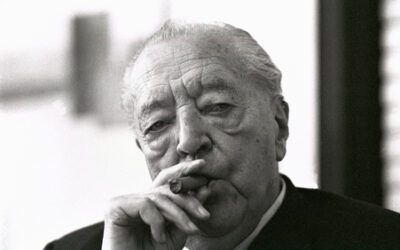


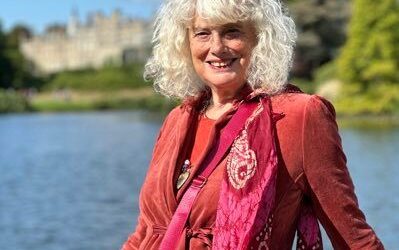
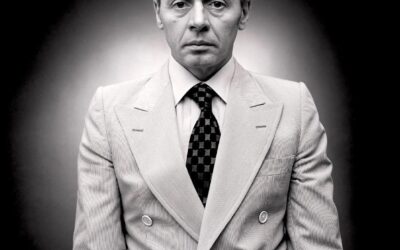
0 Comments